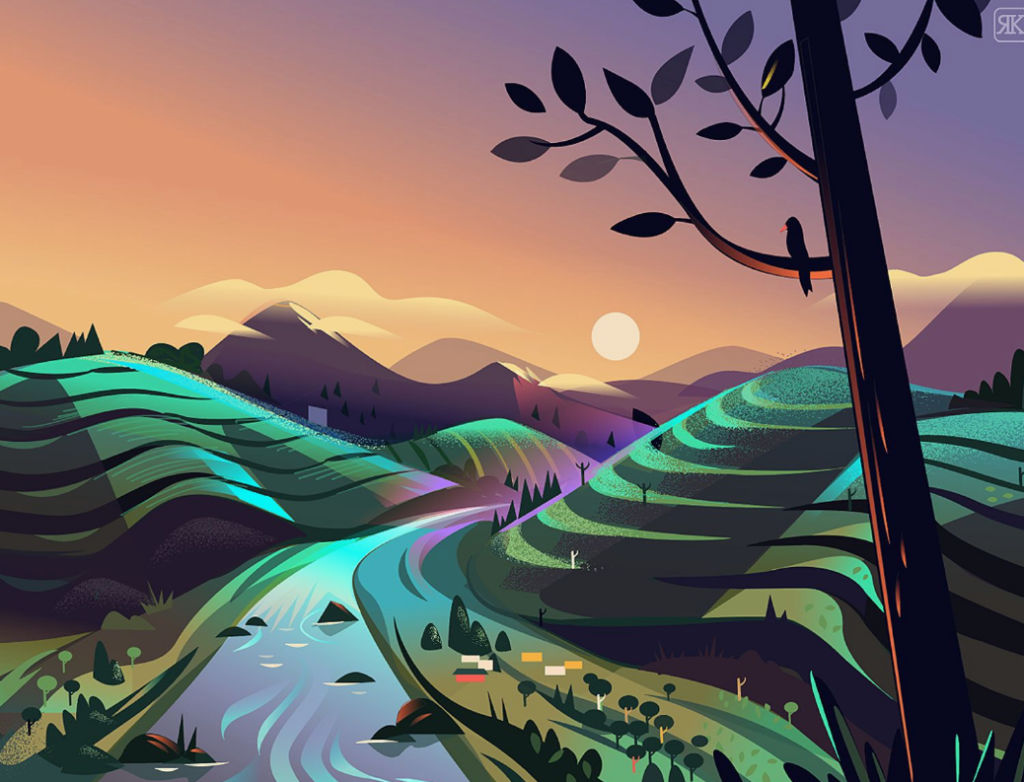Adobe Illustrator is a software used for creating vector art, which consists of scalable, precise graphics made of paths. With Adobe Illustrator, you can design crisp, bold artwork that can be resized without losing quality. Vector art is created using mathematical formulas, allowing for smooth, clean lines and shapes. This type of artwork is ideal for logos, illustrations, and designs that require scalability and precision. Adobe Illustrator offers a range of tools and features to help you create stunning vector art, making it a popular choice for graphic designers and illustrators.
With its versatility and flexibility, Adobe Illustrator is a powerful tool for bringing your creative vision to life in the digital realm.
Adobe Illustrator Vector Art

Getting Started With Adobe Illustrator
Learn how to create stunning vector art with Adobe Illustrator. Master the basics of using this powerful design software and discover the endless possibilities of vector graphics.
Creating Vector Art Adobe Illustrator Vector Art
Adobe Illustrator Vector Art is a versatile tool for creating intricate and professional artwork. In this blog post, we will delve into the process of creating vector art using Adobe Illustrator. Let’s explore how to work with shapes and paths, utilize the pen tool for precision, and make the most of color and gradients to enhance your designs.
Working With Shapes and Paths- Adobe Illustrator Vector Art
When creating vector art in Adobe Illustrator, manipulating shapes and paths is fundamental. Utilize the shape tools to create basic geometric forms and customize them using anchor points. Paths allow for intricate designs by connecting points with precision.
Using Pen Tool For Precision
The Pen Tool in Adobe Illustrator is essential for achieving precise curves and shapes in vector art. By mastering the Pen Tool, you can create smooth lines and intricate details with ease. Practice tracing shapes and paths to enhance your skills.
Utilizing Color and Gradients
Color and gradients play a crucial role in enhancing the visual appeal of vector art. Experiment with color schemes to evoke different moods and emotions in your designs. Gradients add depth and dimension to your artwork, creating a dynamic visual impact.
Advanced Techniques Vector Art Generator
Adobe Illustrator is a powerful tool for creating vector art, and mastering advanced techniques can take your art to the next level. In this article, we will explore some of the advanced techniques for creating vector art in Adobe Illustrator.
Creating Custom Brushes
Custom brushes can add a unique style to your vector art. To create a custom brush in Adobe Illustrator, follow these steps:
- Select the object or path you want to turn into a brush
- Open the Brushes panel and click “New Brush”
- Select the type of brush you want to create (Art, Scatter, or Pattern)
- Adjust the settings to your liking and click “OK”
You can also save your custom brushes for later use by clicking “Save Brush Library” in the Brushes panel.
Working With Text and Typography
Text and typography can be an important part of vector art, whether it’s adding a title or incorporating text as a design element. To work with text in Adobe Illustrator, follow these steps:
- Select the Type tool and click where you want to add text
- Type your text and adjust the font, size, and other settings in the Character panel
- Use the Type on a Path tool to create text that follows a path
- Adjust the spacing and alignment of your text using the Paragraph panel
You can also convert text to outlines to create custom lettering and shapes by selecting the text and clicking “Type” > “Create Outlines”.
Utilizing Effects and Filters
Effects and filters can add depth and texture to your vector art. To utilize effects and filters in Adobe Illustrator, follow these steps:
- Select the object or path you want to apply the effect or filter to
- Open the Appearance panel and click “Add New Effect”
- Select the effect or filter you want to apply
- Adjust the settings to your liking and click “OK”
Some popular effects and filters to try include Drop Shadow, 3D Extrude & Bevel, and Gaussian Blur.
Tips and Tricks
Adobe Illustrator Vector Art offers a plethora of features and tools that can help you create stunning vector graphics. In this blog post, we will explore some tips and tricks to optimize your workflow and master alignment and distribution in Adobe Illustrator.

Optimizing Workflow With Shortcuts
Mastering keyboard shortcuts in Adobe Illustrator can significantly improve your workflow. By utilizing shortcuts, you can perform tasks more efficiently and save time. Here are some essential shortcuts to consider:
- Ctrl + C: Copy
- Ctrl + V: Paste
- Ctrl + Z: Undo
Mastering Alignment And Distribution
Precise alignment and distribution of objects are crucial for creating professional-looking vector artwork. Adobe Illustrator provides various tools to help you achieve this. The Align panel and Distribute Spacing feature can aid in arranging and spacing objects accurately within your artwork.
Exporting and File Formats
Adobe Illustrator Vector Art is a powerful tool for creating stunning graphics. In this blog post, we will explore the process of exporting and file formats in Adobe Illustrator.
Choosing The Right File Format
When saving your vector artwork, it’s essential to choose the right file format based on your intended use. For print, AI or PDF formats are recommended for retaining quality. For web use, SVG or PNG formats are more suitable due to their smaller file sizes. Consider the resolution and transparency requirements of your project when selecting a file format.
Preparing Artwork For Print or Web
Before exporting your artwork for print or web, ensure that it is properly set up in Adobe Illustrator. For print, adjust the color mode to CMYK and set the bleed and trim marks if necessary. When preparing for the web, optimize your artwork for web resolution and consider web-safe colors. Test your artwork on different devices to ensure compatibility and quality.
Inspiration and Resources
Adobe Illustrator Vector Art is a popular form of digital art that utilizes vectors to create high-quality, scalable images. It is widely used by graphic designers, illustrators, and artists to create stunning visuals. In this blog post, we will explore the inspiration and resources available for Adobe Illustrator Vector Art.
Exploring Vector Art Communities
When it comes to finding inspiration and connecting with like-minded artists, exploring vector art communities is a great idea. Here are some popular communities where you can find amazing vector art:

- Adobe Stock – A vast collection of vector graphics and illustrations created by talented artists.
- DeviantArt – A community-driven platform where artists showcase their vector art and connect with others.
- Behance – An online platform where you can discover vector art projects created by professionals.
Finding Creative Assets and Tutorials
If you’re looking for creative assets and tutorials to enhance your Adobe Illustrator Vector Art skills, there are several resources available:
- Adobe Illustrator Marketplace – A marketplace where you can find a wide range of vector brushes, textures, and patterns.
- Tuts+ – An online platform that offers comprehensive tutorials on various aspects of Adobe Illustrator Vector Art.
- YouTube – A treasure trove of video tutorials and speed art demonstrations by experienced artists.
With these resources at your disposal, you can explore the world of Adobe Illustrator Vector Art, find inspiration, and enhance your skills. Happy creating!
Conclusion
Adobe Illustrator is a powerful tool for creating stunning vector art. With its fast and responsive performance, you can give your artwork a more natural look and feel using freeform gradients. Whether you’re a beginner or an experienced artist, Adobe Illustrator offers a wide range of features and tutorials to help you bring your creative vision to life. So why wait? Start creating amazing vector art with Adobe Illustrator today.

